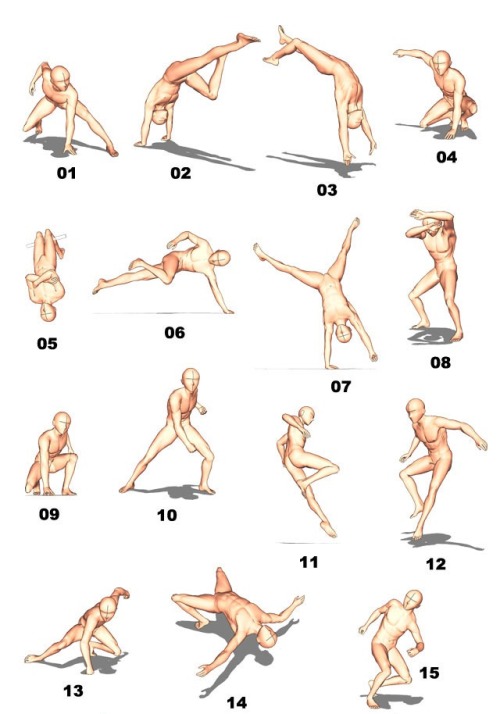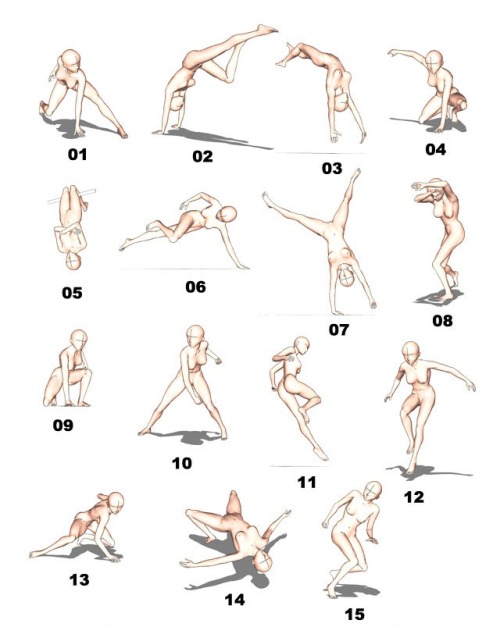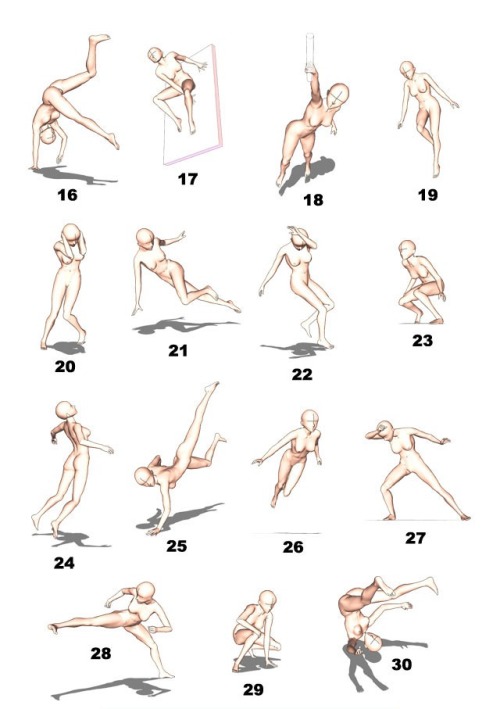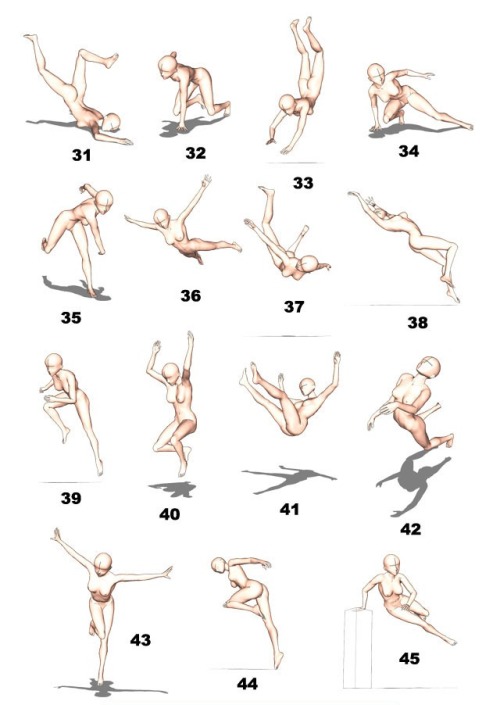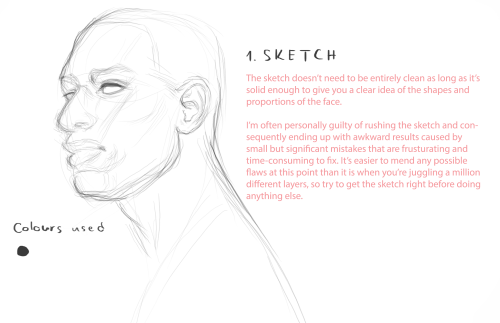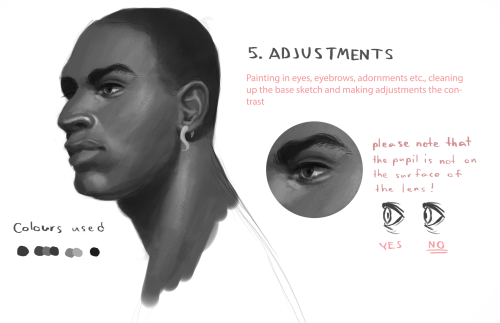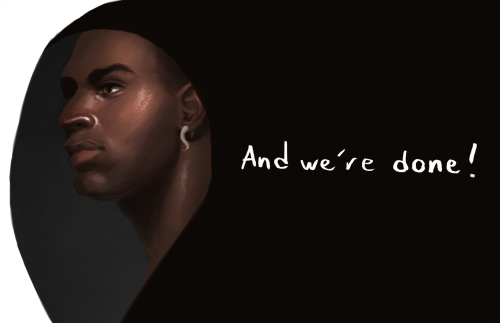For The Anon That Wanted More Head Angles. It’s Not Explained Well, I Apologize For That But Maybe




for the anon that wanted more head angles. It’s not explained well, I apologize for that but maybe this will help a little bit.
More Posts from Arttuti and Others
(If you haven't answered this before) how do you do shading?
i havent !! and. i cant say this is gonna be any help but heres some of the things i try to keep in mind when im shading stuff

so youve got your flats on your initial drawing, the thing thats getting the business

then youve got find out where the light is coming from ! your light source is gonna determine where all the highlights and shadows are cast, and while it doesnt have to be EXACT, its generally a good rule to keep it pretty consistent through the drawing - sometimes youll probably have to deal with multiple sources, and each ones gonna be casting its own light and shadow ( and color by extension )

the intensity and sharpness of your shadows generally also reflects the brightness or closeness of the light ! basically if you wanna make something look BRIGHT, you gotta make sure the shadows are dark enough to get the idea across

so the actual shading part - the way i shade is by getting a brush on a very low opacity, picking the color i want for shadows and then layering the strokes over and over until i get about the darkness i want ( because im LAZY and i dont actually work with complex backgrounds a bunch, i can usually get away with drawing the shadows directly on the locked flat colors layer so theres nothing to clean up after )

afterwards i clean it up a little if i need to, add highlights while keeping in mind where the light is coming from, and start on the Detail Work ( it also might be helpful to keep in mind that highlights dont always go on the EDGE of things, but rather where the curve of something is - where the light would catch. this can help add a little depth and make flat things look rounded out ! )

and THEN its basically me zooming into the drawing at least 200%, putting another layer over the top of everything, and going over the outlines with a tiny brush so the harsh black is mostly gone ! there shouldnt be anything along the edge thats darker than the darkest part of the shadow ( with exceptions like the eyes and nostrils )
and thats mostly it ! i picked red for the shadow color, but picking your shading ( and flats ! ) based on the colors in your background can go a LONG way into making it seem like your character is actually in the environment

reflective light is also an important thing to keep in mind when choosing shadows and highlights - light and color doesnt always just hit an object and stay there, and even in the shade there could be light bouncing back from stuff like water or grass creating smaller, subtle highlights along the edges of things close by
not everything reflects the same way either ! something like a piece of wood is going to react differently than say, a metal ball

so you get your light source, basic highlights and shadows, not bad ! but then theres ALSO the light reflecting from the rest of the environment along the edge of the ball, and then finally the color from both the dragon and the ball reflecting a bit on each other
honestly though these arent RULES of drawing and more just guidelines i work with sometimes, and maybe your style of shading and highlighting looks completely different than this and thats ok !! - im still figuring a bunch of stuff out about light and reflections myself, and the great thing about art is that you can do whatever the hell you want with it

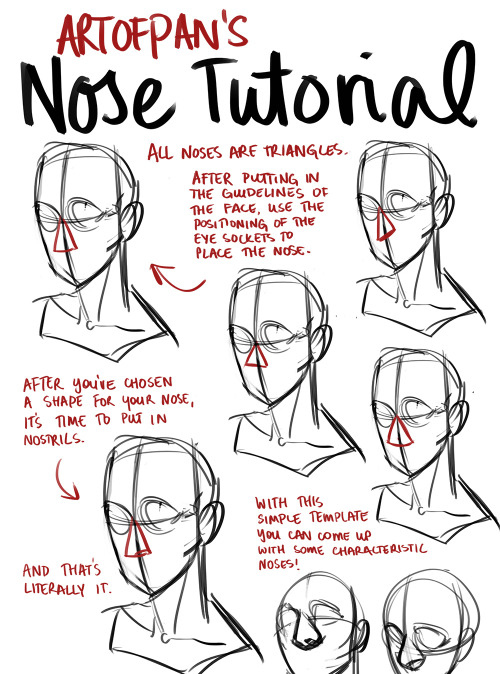


Whoo, super long nose tutorial! I’m sure there’s heaps I didn’t mention in this but this is generally how I approach it - the main thing is to check out references and try and draw different noses, it’ll help you create more diverse characters and have fun with it without being afraid of drawing the nose (since it’s genuinely one of my favourite things to draw).
Other tutorials: X
I have two questions! First: have you ever thought of doing a tarot card suit for your characters? I think it'd work really well for them! And two: help me how do I draw legs
@gravitality
Hi!! I’ve absolutely been thinking about that, yeah, in fact I recently talked about that to my boyfriend just recently. It’ll likely happen after october! And to answer your second question! I made a thing on legs that i hope you’ll find useful!!
So. I’ve already explained basics on legs here, but I don’t think it hurts to go through some extra details to help you understand legs some more.

The very basic thing is to imagine legs as teardrops. Again, this has already been covered in said tutorial above, but I figured it’s still good to mention even the most basic thing that I know of. I still highly recommend you check it out to get in more detail and to see some other examples and practices that you do. But basically, think of legs in the shapes of teardrops, when it comes to shape. If you need a simple stick-figure to connect the legs in the first place, make sure that they bend at the knees a bit so that the legs don’t come off as stiff and unnatural.

As you can see, this method works perfectly for realistic legs as it does for stylistic ones. Remember to use these as a guideline, never to be the exact base of the legs you will be drawing. If you draw traditionally, remember not to draw these guides too hard, or they will be hard to erase/do freestyle!

But how do you actually draw out the legs without drawing them perfectly straight, as shown to the left? The trick is to add volume to them, and how you do that can be winged to your own liking. The idea is to think in curves. As no leg is perfectly straight. You may make these curves minimal if you don’t want them to be curvy, but keep in mind, still, that not even your own bones are perfectly straight, so it is highly recommended that you make them bend, at least a little.

It all depends on how you draw them as well. Say you put your legs together, as shown in this picture, what happens to the fat and muscle? Naturally, they press together, much like how thighs squish on the surface when you sit down (I’m sure most people know what I’m talking about). Make sure this shows in your art! This is very important to keep in mind, because it makes it all look more natural and believable. Try to cross your legs or stand up and sit down again for real-life examples!


The same applies for stretching your legs, more or less, except they appear to become more ‘hollow’ and slimmer. They become less soft to the touch, too, and might show. Try stretching your legs and feel where the muscles tense and where it feels ‘hollow’. This is very helpful with your art.

Many leg tutorials talk about legs without mentioning the behind. It requires a tutorial on it’s own, in all honesty, but this is the most simplest way to draw it connecting to the legs. Remember that it comes in many different shapes, and this is just a super basic guide! Two circles overlapping, while following the line and flow of the legs. Remember the muscle/fat as mentioned above!

Okay, so we got the basics of leg shapes figured out? What if you want o draw them in a certain pose, or with a certain silhouette, but perhaps do not have the reference for it? Or you want to blend your style into it? The key is to not shy away from doodling the form. Make mess, draw lightly and don’t care about the anatomy. That way you’ll get everything down without it appearing stiff. You can clean up the sketch later, always, and if you can, use a reference after you have drawn your pose, to correct your drawing.

Remember that the hips do a lot to the pose of the legs! Make sure they are in flow with your legs, so that it can look more natural. Remembers that hips ‘rotate’ with the spine.

I’ve talked about this method before when it comes to posing, and the same applies for the legs. One way to make legs appear ‘steady’ is to picture them standing in a line, and one of those legs need not to stray from the lines too much, making it steady. If you want a dynamic pose despite the steady pose, you can always have the other leg stray from the line, since it only matters that one leg is steady. This method can create good, casual poses without making them appear boring. (also notice how the teardrop shapes are used here, despite the highly stylized legs)

Do you want a highly dynamic pose, or them to appear unsteady, then skip the line entirely and make both legs aim away from it completely. As you can see, the legs appear more moving, in action, as if they’re fighting, falling, or dancing. As you can imagine, this is not a pose that one could stay steady on, suggesting that it’s taken mid-movement. More about posing and this ‘line’ method is talked about in this tutorial.
Hope this helped you, if you have any questions let me know, and if you’d like to check out all my tutorials they can be found here!




disclaimer: these are all based on my body. I know there are a ton of different body shapes out there. It’s important to study all sorts of body shapes but I’ve only ever use mine as a reference.
I’ve never actually studied arms so I had to google what muscles are what while drawing this so don’t quote me on any of this. I’ll make a head tutorial later
I know I asked this before but honestly i’m desperate, how do you draw folds? I understand pressure points and everything but I still can’t draw them. T^T
ACK! So sorry! Anyway. Tbh it’s a bit hard? But not to the point where you’ll get super frustrated. That’s why I didn’t emphasize this. Also it’s hard to explain but here are the rules I gathered:
- Remember direction. Observe real clothes and understand the type of objects that will push or pull the cloth.

- practice on random lines/ziggy zags and make them the fabric. After you make random shapes or lines, give them the folds. Limit the folds! Large fabric and small objects, MORE folds. Small fabric and large objects, LESS folds. Equal, only NECESSARY folds.

- The type of the fabric will always also limit your drawing of folds.

- KNOW YOUR OBJECTS. BE PATIENT. Don’t just copy references of folds all the time. Try to understand the objects first that will affect the clothe and make folds. So in any angle you’ll make folds you don’t need to worry. But do lots of observing. There’s so much pictures in Google that’s easier to determine folds. Good luck!
-
 maidacc liked this · 4 months ago
maidacc liked this · 4 months ago -
 wink-e reblogged this · 4 months ago
wink-e reblogged this · 4 months ago -
 sunnyteea liked this · 11 months ago
sunnyteea liked this · 11 months ago -
 somehelpfulart-tutorials reblogged this · 11 months ago
somehelpfulart-tutorials reblogged this · 11 months ago -
 deactivated20042025 liked this · 11 months ago
deactivated20042025 liked this · 11 months ago -
 thingsforart reblogged this · 1 year ago
thingsforart reblogged this · 1 year ago -
 ffrposties reblogged this · 1 year ago
ffrposties reblogged this · 1 year ago -
 craftytrashnightmare liked this · 1 year ago
craftytrashnightmare liked this · 1 year ago -
 fireburst-520 liked this · 1 year ago
fireburst-520 liked this · 1 year ago -
 mentconfrato liked this · 1 year ago
mentconfrato liked this · 1 year ago -
 multidimensionalfang1rl reblogged this · 1 year ago
multidimensionalfang1rl reblogged this · 1 year ago -
 enabf reblogged this · 1 year ago
enabf reblogged this · 1 year ago -
 a--mess--of--things liked this · 1 year ago
a--mess--of--things liked this · 1 year ago -
 skullywullypully reblogged this · 1 year ago
skullywullypully reblogged this · 1 year ago -
 skullywullypully liked this · 1 year ago
skullywullypully liked this · 1 year ago -
 flamingstar12 liked this · 2 years ago
flamingstar12 liked this · 2 years ago -
 hatterinev liked this · 2 years ago
hatterinev liked this · 2 years ago -
 greengloves666 liked this · 2 years ago
greengloves666 liked this · 2 years ago -
 blueboy1299 liked this · 2 years ago
blueboy1299 liked this · 2 years ago -
 yavannamire reblogged this · 2 years ago
yavannamire reblogged this · 2 years ago -
 shytigercool reblogged this · 2 years ago
shytigercool reblogged this · 2 years ago -
 ejoyer liked this · 2 years ago
ejoyer liked this · 2 years ago -
 temprah liked this · 2 years ago
temprah liked this · 2 years ago -
 caramel-carrot liked this · 2 years ago
caramel-carrot liked this · 2 years ago -
 gasteruniverseautor liked this · 2 years ago
gasteruniverseautor liked this · 2 years ago -
 snowyjinsoul liked this · 2 years ago
snowyjinsoul liked this · 2 years ago -
 artistrianna reblogged this · 2 years ago
artistrianna reblogged this · 2 years ago -
 vinylghast liked this · 2 years ago
vinylghast liked this · 2 years ago -
 coven2003 liked this · 2 years ago
coven2003 liked this · 2 years ago -
 kicktrick liked this · 2 years ago
kicktrick liked this · 2 years ago -
 mynamisfab liked this · 2 years ago
mynamisfab liked this · 2 years ago -
 doctaaaaaaaaaaaaaaaaaaaaaaa liked this · 3 years ago
doctaaaaaaaaaaaaaaaaaaaaaaa liked this · 3 years ago -
 teaah-art reblogged this · 3 years ago
teaah-art reblogged this · 3 years ago -
 boneless-watermellon reblogged this · 3 years ago
boneless-watermellon reblogged this · 3 years ago -
 boneless-watermellon liked this · 3 years ago
boneless-watermellon liked this · 3 years ago -
 mess-in-public liked this · 3 years ago
mess-in-public liked this · 3 years ago -
 elizabethplaid liked this · 3 years ago
elizabethplaid liked this · 3 years ago








